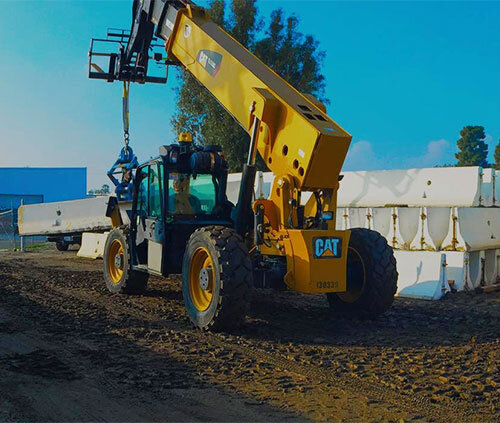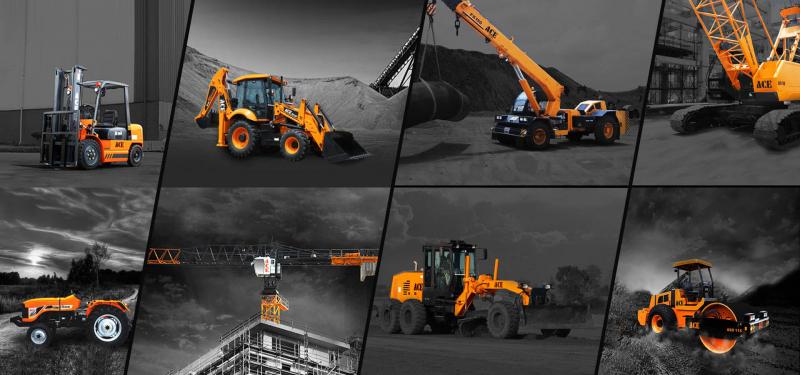Forklift Rental: Heavy Lifting Equipment for Warehousing and More
Forklift Rental: Heavy Lifting Equipment for Warehousing and More
Blog Article
Optimize Your Spending Plan by Understanding the Prices Connected With Construction Tools Rentals
Recognizing the complete range of expenses connected with building tools rentals is important for maximizing your budget. What approaches can be utilized to properly handle these prices and guarantee an extra efficient rental experience?
Introduction of Rental Costs
When taking into consideration building and construction tools services, comprehending the connected expenses is vital for efficient budgeting and job preparation. Rental costs can differ considerably based on several factors, consisting of devices kind, period of leasing, and place. The preliminary rental charge typically shows the devices's market demand and its connected functional capabilities, affecting the general expense.
In addition to the base rental rate, ancillary expenses might occur, such as transportation fees, gas additional charges, and maintenance costs. It is vital to account for these added expenses to properly analyze the total expense of renting tools. The rental period can influence rates; longer services may qualify for discounted rates, while short-term leasings could sustain greater everyday fees.

Break Down of Rental Rates
An extensive understanding of rental rates is important for professionals and job managers aiming to optimize their budgets. Rental rates for construction tools typically include numerous parts, consisting of base rates, time-based charges, and usage costs.
Base prices are the core fees connected with the rental of the equipment, often established by the kind and size of the equipment. These prices can vary significantly, influenced by factors such as tools need, accessibility, and regional market fads. Time-based fees, which may be daily, weekly, or monthly, offer to suit different project timelines and rental periods.
Furthermore, rental rates might consist of usage costs, which apply when devices is made use of past a specified limit, ensuring that the rental company can make up damage. Seasonal demand fluctuations can likewise affect rental rates, with peak construction periods normally regulating greater rates.
Furthermore, understanding the rental business's plans relating to maintenance and insurance coverage can provide more insight into the general cost structure. By analyzing these components, professionals can make enlightened decisions, making sure the option of rental devices straightens with both project requirements and budget restraints.
Extra Costs to Consider
Understanding the ins and outs of added fees is essential for contractors to handle their total leasing expenses successfully. Past the typical rental rates, various extra costs can dramatically impact the complete expense of devices service. These charges usually include distribution and pickup fees, which can differ based upon range and logistics entailed in transporting the tools to and from the task website.
Moreover, some rental companies might impose fuel surcharges if the devices is returned with much less fuel than when rented out. It is likewise vital to know prospective cleansing costs, particularly for customized tools that requires comprehensive upkeep after usage.

Thoroughly assessing the rental arrangement and making clear these extra charges ahead of time can aid specialists ensure and avoid unexpected costs that budgets remain intact throughout the project lifecycle.
Upkeep and Fixing Expenses
Routine repair and maintenance costs are often neglected elements that can dramatically affect the overall cost of building equipment services. When leasing devices, it is crucial to take into consideration not just the rental charges but likewise the potential prices related to keeping the machinery in optimum operating condition.
Lots of rental firms include standard maintenance as part of the rental agreement; nonetheless, a lot more substantial repair work or unanticipated breakdowns can lead to extra expenditures. It's important to assess the rental agreement carefully to understand what maintenance solutions are covered and what duties drop on the renter.
Moreover, devices that is not well-maintained can bring about inefficiencies on duty site, potentially creating hold-ups and raising job costs. To alleviate these threats, it is a good idea to carry out routine inspections and maintain open communication with the rental company concerning any kind of concerns that arise during use.
Insurance Policy and Liability Expenses
Insurance policy and liability expenses are critical components that why not find out more can dramatically affect the overall expense of building tools rentals (scissor lift rental). These expenses guarantee that both the rental business and the client are shielded from potential monetary losses emerging from accidents, damage, or theft during the rental period

Additionally, customers should be conscious of any deductibles or exemptions in the insurance policy, as these can influence prospective out-of-pocket expenditures. Understanding the terms and problems of any insurance policy protection is important to stay clear of unexpected expenses. Inevitably, budgeting for insurance coverage and responsibility expenses can assist make certain a smoother rental experience and safeguard against financial dangers connected with construction jobs.
Verdict
In verdict, a thorough understanding of the prices connected with building devices rentals is vital for efficient budget management. Inevitably, educated decision-making relating to devices rentals adds to the total success of building endeavors.
Rental costs can differ substantially based on several factors, consisting of devices type, period of leasing, and location (construction equipment rentals). The rental duration can affect pricing; longer services may certify for reduced rates, while short-term rentals could incur greater everyday costs
By carrying out extensive study and engaging with reliable rental firms, specialists can effectively browse the complexities of rental pricing, inevitably maximizing their economic resources.
Past the standard rental prices, various auxiliary fees can significantly influence the total expense of tools service. Rental business often supply responsibility over at this website insurance coverage that covers injuries to 3rd parties or damage to residential property, while equipment damages insurance policy can cover the cost of repair services or substitute if the rented devices is damaged.
Report this page